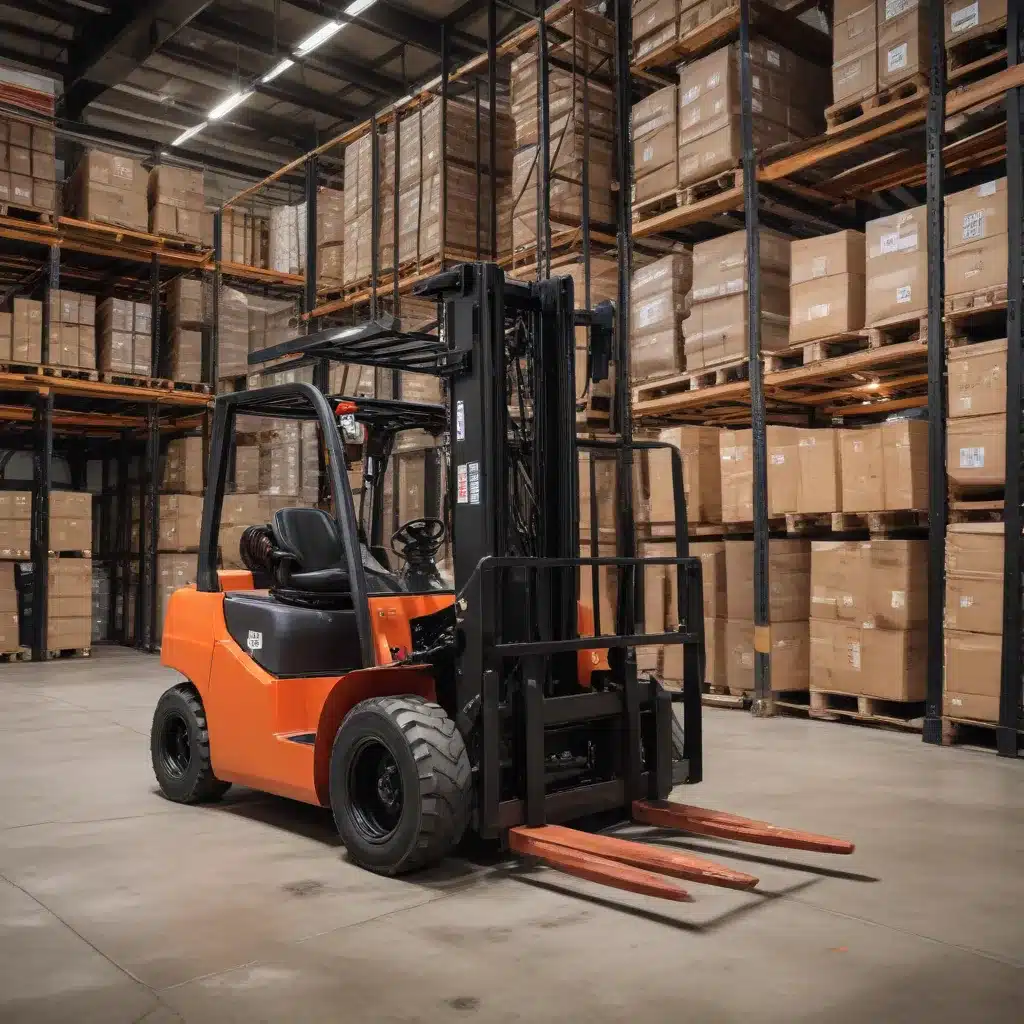
Optimizing Energy Consumption and Emissions for Sustainable Warehousing
As an industry veteran in forklift operations, warehousing, and logistics, I’ve witnessed firsthand the growing importance of environmental sustainability in our field. With increasing pressure from regulations, customers, and stakeholders to reduce the carbon footprint of warehousing activities, finding the right balance between performance and eco-friendliness has become a critical challenge for logistics managers.
One area that has come under the spotlight is the choice of forklift fuel type and its impact on energy efficiency and emissions. Transitioning to cleaner, more sustainable power sources can significantly improve a warehouse’s environmental profile, but it requires careful consideration of operational needs, cost implications, and technological advancements.
In this comprehensive guide, we’ll delve into the various forklift fuel options, analyze their environmental impact, and explore strategies to enhance fuel efficiency and reduce emissions in warehousing operations. Whether you’re managing a fleet of forklifts or looking to optimize your warehouse’s energy consumption, this article will equip you with the knowledge and insights to make informed decisions that benefit both your business and the environment.
Forklift Fuel Types: Environmental Implications
The selection of forklift fuel type plays a crucial role in determining the environmental impact of warehousing operations. Let’s explore the key options and their respective sustainability considerations:
Electric Forklifts: These zero-emission workhorses are often hailed as the greenest choice available. Powered by rechargeable batteries, electric forklifts eliminate the need for fossil fuels, making them particularly well-suited for indoor use and environments where air quality is a primary concern. However, it’s essential to consider the environmental impact of battery production and disposal. As battery technology continues to evolve and recycling programs become more widespread, the sustainability of electric forklifts is steadily improving.
Propane Forklifts: Offering a middle ground between performance and environmental impact, propane forklifts strike a balance that is worth considering. While they do produce emissions, these are significantly lower compared to their diesel and gasoline counterparts. Propane is a cleaner-burning fuel, reducing harmful pollutants such as carbon monoxide and hydrocarbons. Additionally, propane forklifts can be used both indoors and outdoors, providing versatility without a heavy environmental cost. Proper maintenance and responsible handling of propane can further minimize the ecological footprint of these machines.
Diesel and Gasoline Forklifts: At the opposite end of the spectrum, diesel and gasoline forklifts are known for their power and are often employed in heavy-duty applications. However, they are also the most polluting options. These types of forklifts emit high levels of carbon dioxide, nitrogen oxides, and particulate matter, contributing significantly to air pollution and climate change. For businesses aiming to reduce their environmental impact, transitioning away from these fuel types or investing in cleaner technologies is a crucial step.
When evaluating forklift fuel options, it’s essential to consider not only operational efficiency but also the environmental implications. Striking the right balance between performance, cost, and sustainability can be challenging, but it’s a necessary pursuit for warehouses and logistics operations that are committed to reducing their carbon footprint.
Strategies for Improving Forklift Fuel Efficiency
Enhancing forklift fuel efficiency is a multifaceted endeavor that requires a holistic approach. Here are some key strategies to optimize energy consumption and minimize emissions in your warehousing operations:
-
Technology Upgrades: Embrace the latest advancements in forklift technology, such as lithium-ion (Li-ion) batteries and fuel cell systems. Li-ion batteries offer improved energy density, faster charging times, and longer runtimes compared to traditional lead-acid batteries. Fuel cell forklifts, powered by hydrogen, are also gaining traction due to their high efficiency and zero direct emissions.
-
Charging and Maintenance Practices: Implement smart charging protocols and regular maintenance routines to ensure your electric or hybrid forklifts operate at peak efficiency. Optimize charging schedules, leverage regenerative braking, and regularly service batteries and other components to maximize energy utilization and minimize energy losses.
-
Operational Optimization: Leverage data-driven decision-making to streamline material handling and forklift utilization. Use warehouse management systems (WMS) and fleet management solutions to analyze traffic patterns, optimize route planning, and balance workloads, reducing unnecessary travel and energy consumption.
-
Facility Design and Infrastructure: Incorporate sustainable design elements in your warehouse layout and infrastructure to enhance energy efficiency. This could include features like natural lighting, efficient HVAC systems, and strategic positioning of charging stations to minimize energy losses during forklift operations.
-
Employee Engagement and Training: Empower your workforce by providing comprehensive training on proper forklift handling, energy-efficient driving techniques, and maintenance practices. Encourage a culture of sustainability, where employees actively participate in identifying and implementing fuel-saving measures.
-
Monitoring and Continuous Improvement: Establish robust performance monitoring and reporting systems to track key metrics such as energy consumption, emissions, and cost savings. Use this data to identify areas for improvement, benchmark your progress, and continually optimize your forklift fleet and warehousing operations.
By adopting a multifaceted approach that combines technological advancements, operational optimizations, and employee engagement, you can unlock significant improvements in forklift fuel efficiency and significantly reduce the environmental impact of your warehousing activities.
The Path to Sustainable Warehousing
As the industry continues to navigate the challenges of environmental sustainability, forklift fuel efficiency has emerged as a critical focus area. By carefully evaluating the available fuel options, implementing strategic upgrades, and fostering a culture of energy-conscious practices, warehouses and logistics operations can strike the right balance between performance and eco-friendliness.
At Forklift Reviews, we are committed to providing our readers with the most up-to-date information and practical insights to help you navigate the path towards sustainable warehousing. Whether you’re in the market for a new forklift, seeking to optimize your existing fleet, or looking to enhance your overall warehouse operations, our team of experts is here to guide you every step of the way.
Visit our website at https://www.forkliftreviews.com/ to explore our extensive library of forklift reviews, safety guidelines, maintenance tips, and industry trends. Let us be your trusted partner in shaping a more sustainable future for your warehousing and logistics operations.

